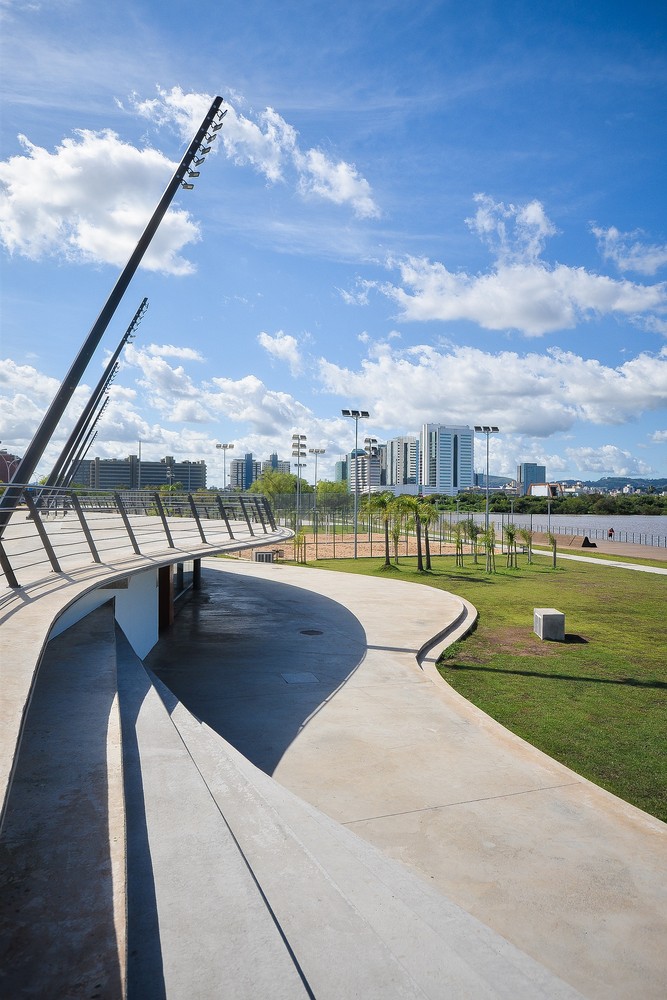Karuizawa Museum Complex YASUI HIDEO ATELIER
2013-03-22 01:00
在赢得比赛后,我被要求设计一个设施,陪同我参观世界著名的日本画家/艺术家森州(HiroshiSenju)的博物馆。在我开始实际规划之前,我首先将我的概念工作(即包含传统和现代形式的几何形状)列为优先事项,以使我的设计与以优雅的方式诠释Karuizawa自然的弯曲形式的博物馆在同一地点共存。
I was requested, after winning through the competition, to design a facility accompanied to the museum of Hiroshi SENJU, a world-famous Japanese painter/artist. Before I started the actual planning, I prioritized building my conceptual work first ( i.e. geometrical shape containing both traditional and modern forms ) in order to make my design coexist on the same site with the museum that had a curved form interpreting Karuizawa ’s nature in a elegant way.
我从日本艺术文化中建立了设计理念,以创造出一种适合博物馆的建筑,具有国际公认的艺术作品。像“折纸”、“森苏扇”、“白布屏风”这样的日本工艺品,都是从一张纸上创造出来的,有着无限的可能性,可以用各种形式塑造。它们与西方的几何设计也有相似之处,甚至以其独创性和美感引领现代艺术。
I built the design concept form Japanese art culture in order to create an architecture suited to the museum having art pieces appraised internationally. Such Japanese craft as ‘Origami’, ‘ Sensu fan ‘, or ‘Byobu screen ‘ are created from just one piece of paper, having an infinite possibility to be shaped in various forms. They also have similarity to western geometric design, which are even led to modern art with their originality and beauty.
同时,我认为我的设计与这一地区的尖锐山景共存,如亚松加泰克山或山下山,这与博物馆的弧线形成了鲜明的对比。
I, at the same time, thought my design coexist with sharp lines of mountainous scenery seen in this area such as Yatsugatake or Asamayama mountains, which is totally contrastive with the curved lines of the museum.
另一个重要的因素是,作为一个主题,我要记住的是,我的建筑必须是一个地标,人们可能会遇到艺术品,而不仅仅是博物馆旁边的一个设施。
Another important factor I kept in mind as a theme was that my architecture had to work as a landmark where people might encounter artworks, not only as a facility next to the museum.
 举报
举报
别默默的看了,快登录帮我评论一下吧!:)
注册
登录
更多评论
相关文章
-

描边风设计中,最容易犯的8种问题分析
2018年走过了四分之一,LOGO设计趋势也清晰了LOGO设计
-

描边风设计中,最容易犯的8种问题分析
2018年走过了四分之一,LOGO设计趋势也清晰了LOGO设计
-

描边风设计中,最容易犯的8种问题分析
2018年走过了四分之一,LOGO设计趋势也清晰了LOGO设计




































































































